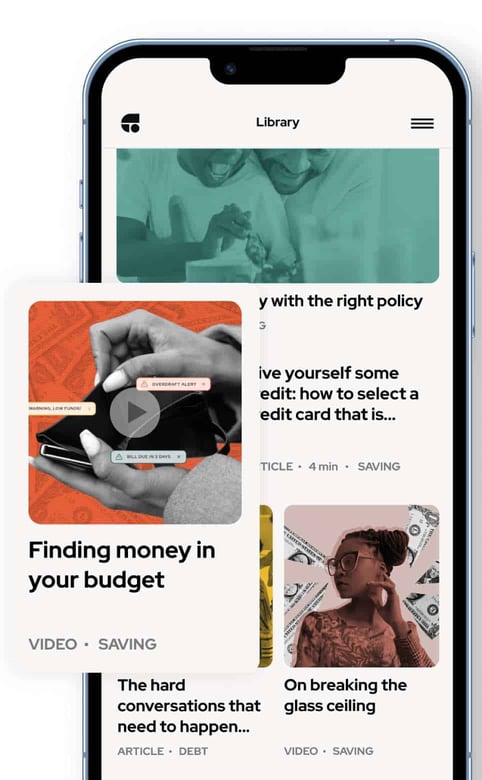
Our experts and industry insiders blog the latest news, studies and current events from inside the credit card industry. Our articles follow strict editorial guidelines.
In a Nutshell: Race is one of the strongest predictors of financial well-being in the US, yet many in the corporate marketplace fail to appreciate the stark racial financial divides that persist in the 21st century. The OfColor financial wellness platform is changing that by acknowledging what data reveals about the racial wealth gap and doing something about it. Content, tools, and coaching on OfColor present insights and strategies to overcome systemic barriers and entrenched patterns. Everyone wins when more workers of color are financially healthy and positioned to build generational wealth.
Black middle-class home sellers know to remove photographs and other personal items that might give away their race before having their properties appraised or shown to potential buyers.
A growing body of research shows appraisals are much higher when appraisers think they’re working with white people. It’s a pinprick of evidence linked to a legacy of racial financial exclusion in the US that continues to exact a toll on equity.
OfColor exists first to acknowledge what data tells us about deep-set racial financial disparities in the US and where they came from. It interrogates how we explain that as a society by engaging stakeholders in direct action: financial wellness coaching for workers of color to confront their racial financial legacy.

Content, tools, and coaching deliver actionable, personalized strategies that get at root causes to turn the financial numbers around for participants, whatever that means in each case. Firms receive a disproportionately positive return on their investment in the form of more financially secure, satisfied employees of color with a higher stake in their economic future.
It’s an emerging necessity in a diversifying American economy with a consistent racial gap in home equity, financial assets, income, and other wealth measures of $150,000 or more since the 1980s, said Yemi Rose, OfColor’s Founder and CEO. Wealth begets wealth: Achieving a lasting financial legacy without assets or a strategy to obtain them is an exercise in futility.
Black families hold about one-tenth of the wealth of white families; Latinx families have about one-eighth. Capital is ostensibly colorblind, but there’s plenty of empirical evidence contradicting the theory.
“The existence of the racial wealth gap is illogical, but we must acknowledge that it’s real,” Rose said. “OfColor helps workers of color thrive in a system that wasn’t built for them.”
Overcoming Historic Barriers of Wealth Creation
What Rose means by that is a story that encompasses world history at least from the time of the Atlantic slave trade. The Ivy League-educated Rose, a Black man, looks at the problem from a dual perspective.
He grew up in Jamaica experiencing little of what commentator Michael Gerson once termed “the soft bigotry of low expectations” prevalent in the US. As a foreigner, Rose was also spared the generational trauma of Jim Crow laws, a racial caste system that legitimized anti-Black racism and relegated Black Americans to the status of second-class citizens. That made him a racial outsider when he came to the US to study at Cornell University. Even that relatively accepting environment gave him a new perspective.

“It’s a real transition moving to the United States as a Black man,” Rose said. “For me, it meant coming into my Blackness.”
He read and reflected to deepen his understanding of American racial mores. In the workplace, he observed corporate acceptance of wealth disparities and a one-size-fits-all approach to workplace development. His sister committed suicide after struggling with depression and debt.
He learned that the Federal Housing Administration had a long history of racial redlining and support of restrictive covenants that chronically undermined property values in Black urban neighborhoods. He learned that many Black World War II veterans received fewer housing and educational benefits from the GI Bill which further widened the gap.
OfColor grew out of those experiences as Rose’s manifestation of intent to tackle the intersection of race and money and make a material impact on the racial wealth gap.
“Two-thirds of 401(k) hardship withdrawals come from workers of color, and there’s a persistent 20-25% difference in savings levels between employees of color and white employees,” Rose said. “The more I dug into the data, the more I realized the need for a holistic financial wellness platform focused on resiliency — because that’s what the racial wealth gap saps from workers of color.”
Boosting Workforce Value and Longevity
An employee base that’s struggling in a community that’s struggling is bad for business, Rose said in a video on the OfColor website. That’s why, through OfColor, many large employers devote a portion of what they spend on recruitment, retention, and development to what is likely a disproportionately small portion of their workforce. The racial wealth gap is so wide that partnering with OfColor has an outsized return for many organizations.
The best fits are companies with large numbers of frontline employees. One prospective client with more than 240,000 workers has an annual employee turnover of 100,000.

Working with OfColor helps signal a commitment to workplace equity. Employees are more likely to remain in a position or pursue advancement with an employer if they feel supported and see a way to improve their financial lives without switching jobs.
“Companies see the most value from investing in financial wellness when that investment is with the employees who need it the most,” Rose said.
It works because Rose and the OfColor team understand the distinct character of the minority experience in America. For example, workers of color are more likely to be first-generation college graduates. They’re more likely to live in multigenerational homes with family and financial obligations that extend beyond the nuclear family.
Workers of color are also more likely to have an obligation to send money home to loved ones and family members and to face obstacles in renting, purchasing, or selling a home.
OfColor offers foundation-building tools that emphasize resiliency, savings, and budgeting. There’s a prominent in-person component to financial coaching because it aims to get people comfortable expressing their concerns with financial coaches who understand their lived experience. Financial literacy content avoids stereotypical bootstrapping narratives and acknowledges the systemic barriers of wealth creation people of color routinely face.
“The data is clear: there’s a unique minority money experience,” Rose said. “There are things that are unfortunate but are very real in our world that require folks to guide you through.”
A Data-Centric Approach to Racial Financial Equity
Rose’s experience at Cornell taught him the importance of measurables in assessing the success of any endeavor. From the outset, he wanted to ground OfColor in data and numbers to make the case with corporates that race-based financial wellness coaching is beneficial.
A July 2023 partnership with Financial Finesse Ventures promises to extend OfColor’s outreach and effectiveness and provide an even firmer foundation in data for what the company is trying to accomplish.

“When we’re looking at the impact we have on an organization, we’re not looking at correlation — we’re not saying this happened and then that happened,” Rose said. “We’re looking to plot a direct line from intervention with our program to commercial outcomes on the employer side.”
Financial Finesse combines personal financial coaching with cutting-edge technology to improve workers’ lives. Partnering with Financial Finesse amplifies OfColor’s ability to understand the wealth gap and prioritize the most effective strategies for addressing it.
Financial Finesse’s Financial Wellness Think Tank™ includes a research portal that helps expand OfColor’s view of the marketplace.
“We’re already looking for opportunities to align our questions and assessments to make like-for-like comparisons over time and drive additional material outcomes for businesses,” Rose said.
Group coaching topics at OfColor delve into subjects that don’t get much play in traditional financial coaching, including the issue of racial differences in home appraisals.
Other subjects include the challenge of late-stage retirement planning with few assets, a circumstance many workers of color face. Participants interact in a gamified environment, receiving action plans from coaches and scheduling group coaching and webinar events. Financial monitoring and flexible employee incentives help drive engagement.
Users ask questions, consult OfColors’s massive content library, and engage with AI-based budgeting and wealth-management tools that prompt positive actions. Rose said it’s all about keeping people on track and moving forward, and it works both ways.
“The data showed that companies needed help supporting their workers of color,” Rose said. “And now we have the additional firepower from Financial Finance to really make some change.”


![7 Best Loans For Gig Workers ([updated_month_year]) 7 Best Loans For Gig Workers ([updated_month_year])](https://www.cardrates.com/images/uploads/2022/11/Loans-For-Gig-Workers.jpg?width=158&height=120&fit=crop)

